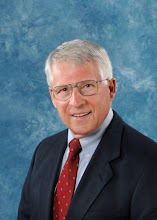In cooperation with the Natural Hazards Research and Applications Information Center of the University of Colorado, CARRI hosted the first Resilience Research Workshop on July 14. The day-long event brought together over 50 scholars and researchers who have worked in areas touching on resilience, published scholarly articles and papers on resilience issues and who are clearly thought leaders in this growing discipline of understanding resilience. Five panels covered a wide range of resilience topics ranging across the social, economic and physical aspects of the subject. A workshop report and several individual summary papers will be available on the CARRI web site very soon.
While it is clear that both the volume and quality of resilience research has grown significantly over the past few years, I came away with an impression that may deserve further thought and discussion.
Academic research is appropriately narrowly focused – some researchers concentrate on social resilience, some on economic resilience, and some on physical resilience. While most acknowledge the need for integration across the various domains, it seems to me that the integration is not as robust and productive as it might be – or perhaps as it will become as the discipline matures. I think that that integration of the social, economic and physical aspects of resilience is critical for practitioners to fully grasp the implications of resilience for their communities. This integration may also allow the research to be more useful to those in communities who struggle with the day to day problems of trying to find practical ways forward. Academic research that is too narrowly drawn and done without a view of how non-specialists will use the results will not be very helpful to the local mayor or business person who must make day to day resource decisions. Integrating work like that being done in the area of indicators of resilience by Susan Cutter (Hazards and Vulnerability Research Institute, University of South Carolina) and Walter Peacock (Hazard Reduction and Recovery Center, Texas A&M University) seems to strike just the right balance between great academic research and potentially really useful information for communities.
Subscribe to:
Post Comments (Atom)

This a very insightful blog (at the risk of not sounding like a scholar). We only need observe that a community is only as strong as its thinnest fabric to recognize we we must take a panoptic approach to assessing resilience.
ReplyDeleteAndy F.